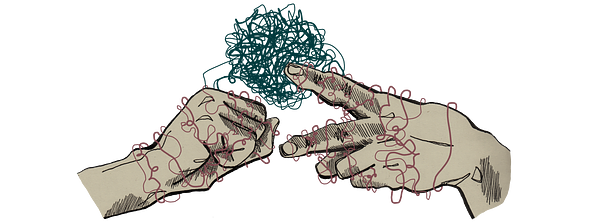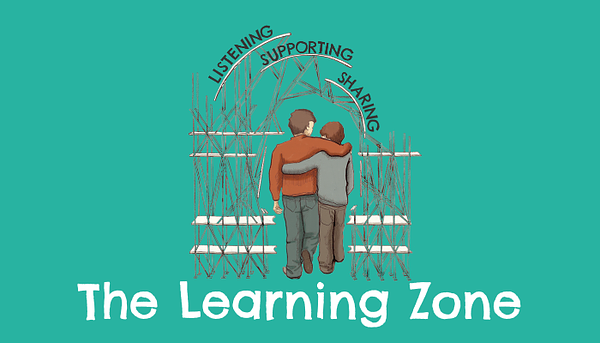Professionals and Practitioners
This digital resource tells the story of how our brains interpret the world around us and how this translates in our bodies, emotions and behaviours. It has been designed to be used by professionals working with young people interested in learning more about the science of conflict and boosting their wellbeing.
Download Teacher Booklet
Development
Learn about how brain development affects young people, with a close look at how early years parenting can feed into ‘attachment styles’ and trauma.
Attachment
‘Attachment’ has a specific meaning when talking about a child’s early years. We all have ‘attachment styles’ that influence how we relate to others. Growing up in happy or unhappy environments impacts brain development.
Monkeys, Lizards and Cranial Cocktails
When we talk about how we respond to conflict, we’re talking about more than just the immediate cause of an argument. We’re looking back into man’s evolutionary past. Our brains have what we can call ‘Lizard’ and ‘Monkey’ regions that determine reactive and reflective responses. Neurochemicals also play a role here, creating what you might call ‘cranial cocktails’ that induce different emotional states.
The Teenage Brain
Changes in the structure of the teenage brain are a major driver behind typical adolescent behaviours. These behaviours are often perceived by adults as what some would describe as ‘bad’, yet they can be explained by the ‘remodelling’ the brain is undergoing during this stage of development. Adverse Childhood Experiences (ACEs), which are caused by stress, can also affect the developing brain.
Emotions
As professionals we can support young people to recognise emotions in themselves and others; discover how to as well as more on regulation and primary and secondary emotions.
Understanding and Working with Emotions
Emotions are a complex pattern of reactions that involve subjective, physiological and behavioural elements. Understanding and recognising emotions in ourselves and others is key to how we navigate our relationships and the world around us.
Emotional Regulation
While there are no negative emotions, they can become problematic when they become dysregulated or expressed in unhealthy ways. There are several models such as the window of tolerance and emotional arousal cycle that can be used to explore this.

Families and Young People
As professionals we may be in a good position to support young people to explore their emptions and practice emotional regulation. We may be dealing with strong emotions every day, so here are a few tips for managing and supporting with emotions.

Coping Skills
As professionals we can help young people to discover practical coping skills that can help them to process emotions, while empowering families to develop their own coping skills.
Introduction to coping
Coping skills can help young people deal with stress and other difficult situations. Incorporating coping skills into everyday life improves overall wellbeing and builds resilience so that we are better equipped to deal with difficult situations when they arise. Some coping skills are more helpful than others, so it’s important to consider short-term and long-term effects.
Coping skills
There are many coping skills (emotional, cognitive, solution-focused) that are suitable for young people to try. Here we look at some examples of what young people can do to soothe emotions or boost mood such as breathing and grounding techniques, journaling, and so on.

Unhelpful thinking styles
Sometimes it is the way that we are thinking about the situation that is causing the problem and resulting in uncomfortable emotions. We can teach young people simple cognitive behavioural therapy techniques to help them challenge unhelpful thinking style and deal with intrusive thoughts.

Relationships
Arguments can damage relationships. Learning to listen and to communicate better and to use conflict approaches can end arguments well – and improve lives.
Introduction to conflict
What is conflict? We define the term before going on to look at common causes of conflict, and how reframing how we look at a conflict can help bring an argument to a good conclusion. We also look at ‘Conflict approaches’, which are responses that can be applied to manage conflict.Lorem ipsum dolor sit amet, consectetur adipiscing elit. Pellentesque efficitur velit vitae mi imperdiet dictum. Fusce sed dui vitae erat pharetra posuere nec porta dui. Sed elementum massa iaculis tellus tempus tempus ut at leo. Praesent mattis cursus luctus.
Communication
There are four types of communication styles: passive, aggressive, passive-aggressive, and assertive. Nevertheless, most of us don’t use a single communication style in every interaction; they’re simply tools that you can use to communicate. We look at how ‘I Statements’ and at listening techniques that can help to resolve conflict.
Asking questions during difficult conversations
Difficult conversations need not always be so hard if we prepare for them, keeping in mind the layout of the room, the time, the place, and so on. Once the conversation begins, there are ways to ask questions that can bring the family back together again.






